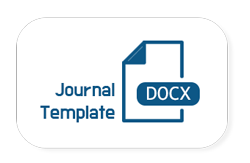The effectiveness of a program based on the Assessment, Evaluation and Programming System (AEPS) in developing social communication skills for children with autism spectrum disorder
Abstract
The current study aimed to explore the impact of a program based on the Assessment, Evaluation, and Programming System (AEPS) on enhancing social communication skills among children with autism spectrum disorder (ASD). This program was applied to a sample of Jordanian children, specifically five children with ASD enrolled in the Community Rehabilitation Center in Al-Baqa’a Camp. These children were purposefully selected, and the study employed a descriptive methodology using a case study approach.The program was designed to develop the social communication skills of the children, and its impact was measured through teachers' observations. The study's results revealed statistically significant differences between the overall scores on the social communication scale in the pre-test and post-test measurements. These differences indicate a notable improvement in the children's social communication skills following the implementation of the training program, Furthermore, the results showed no statistically significant differences between the overall scores in the post-test and follow-up measurements of the social communication scale, suggesting the stability of the program's impact on the social communication skills of the children, according to the teachers' observations.The study concluded with important recommendations for researchers and policymakers, emphasizing the need to develop and implement such educational programs on a broader scale. Additionally, the study provided valuable insights that could guide future research in this field.
Downloads
Published
How to Cite
Issue
Section
License
Copyright (c) 2025 Arab Institute of Sciences & Research Publishing - AISRP

This work is licensed under a Creative Commons Attribution-NonCommercial-NoDerivatives 4.0 International License.












